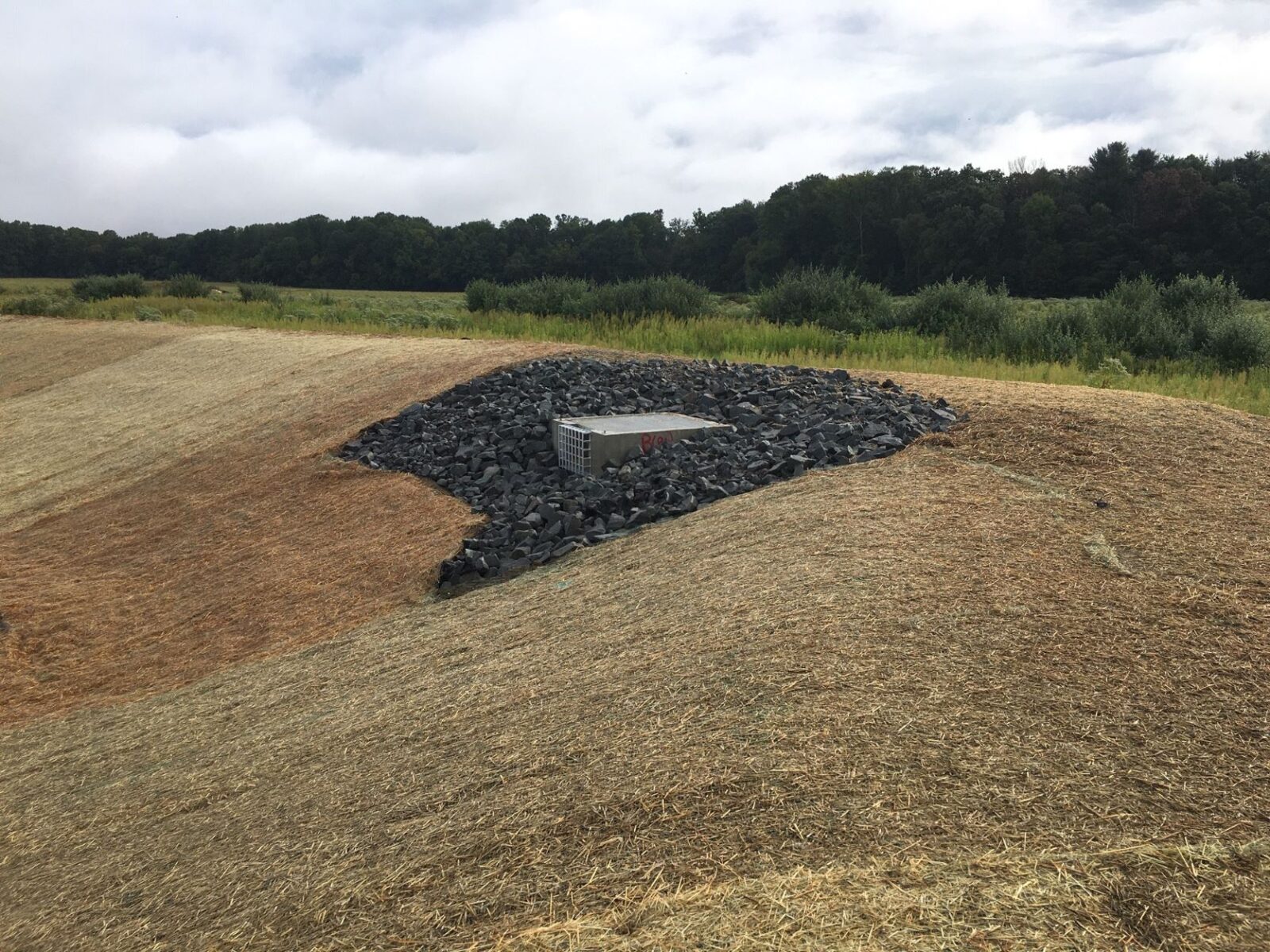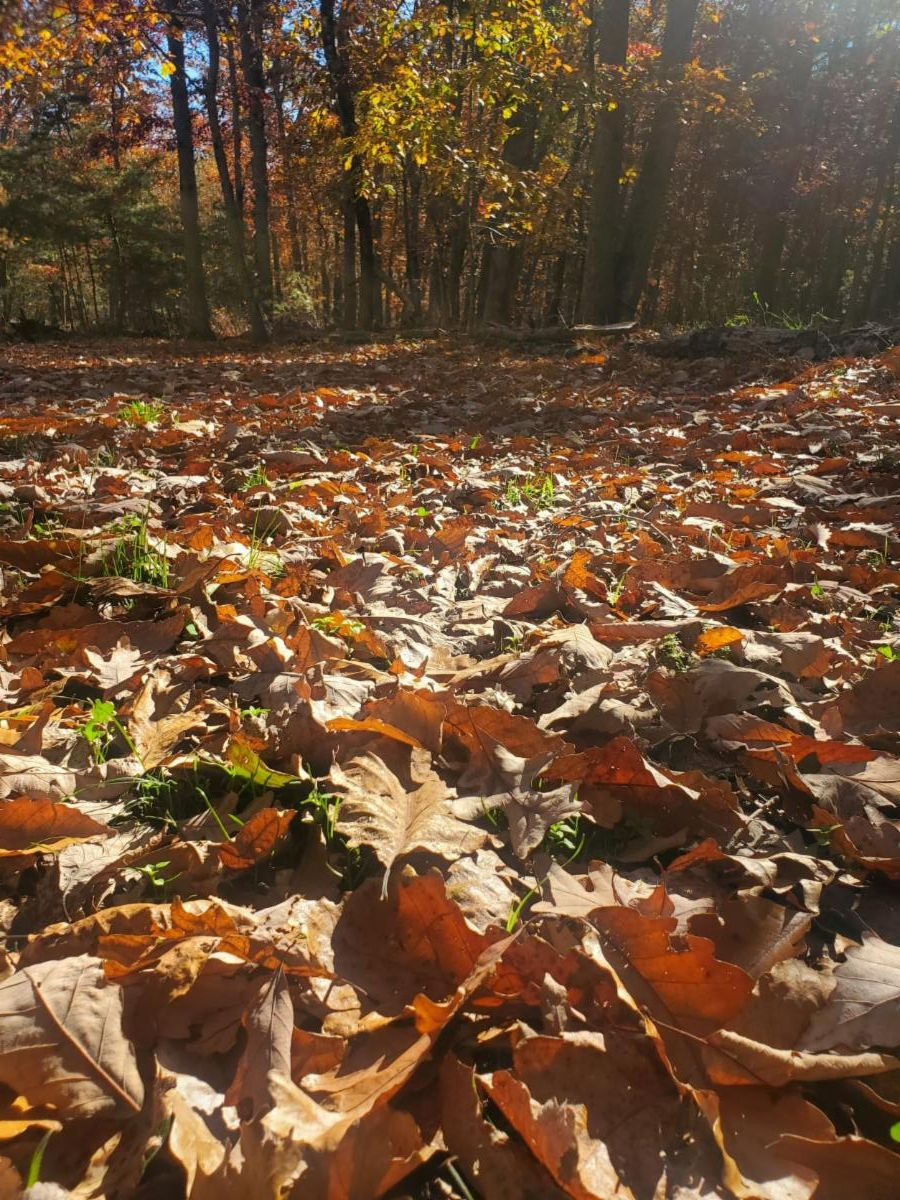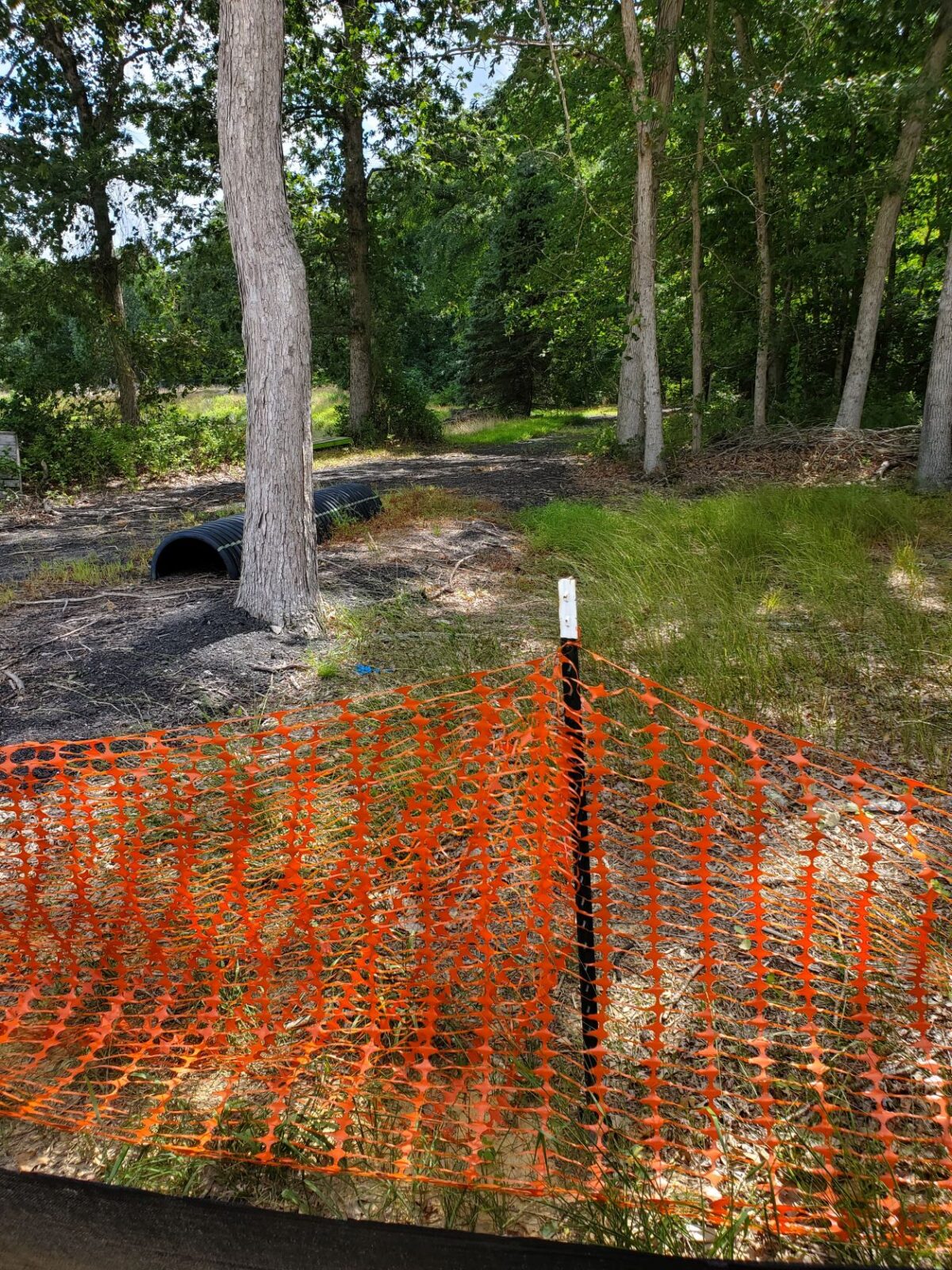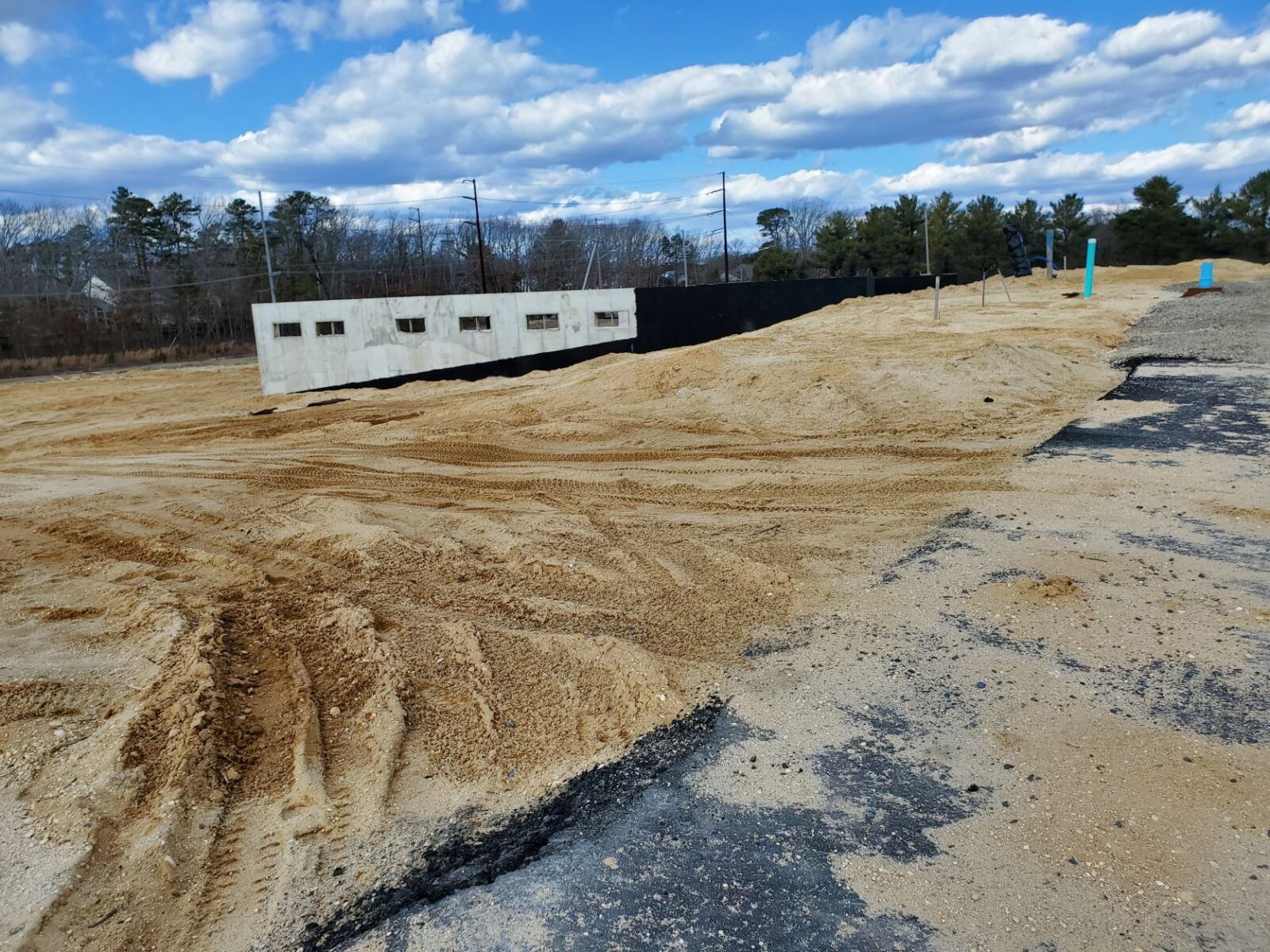The Soil Erosion and Sediment Control Standards are a suite of design practices used by engineers and architects to develop “erosion control plans” which are reviewed by local soil conservation districts. The current Standards, revised in 2017, contain 32 practices. Ten focus on the establishment of vegetation as a means to stabilize soil after disturbance, and twenty-two address either temporary or permanent control measures for the safe conveyance of runoff offsite and downstream of the site. Read more about the Standards on the NJ Department of Agriculture website, or scroll below.
Use these links to skip down the page to the section that interests you:
Below are some descriptions and images for proper and improper use of common erosion control measures seen construction sites.
Standard for Sediment Barrier (Silt Fence)
The purpose of the sediment barrier is to intercept and detain small amounts of sediment from unprotected areas of limited extent. The sediment barrier is used when no other practice is feasible, there is no concentration of water in a channel or other drainage way above the barrier and erosion would occur in the form of sheet or rill erosion.
Maintenance:
- Sediment shall be removed from the upstream face of the barrier when it has reached a depth of ½ the barrier height
- Repair or replace barrier (fabric, posts, bales, etc.) when damaged.
- Barriers shall be inspected daily for signs of deterioration and sediment removal.
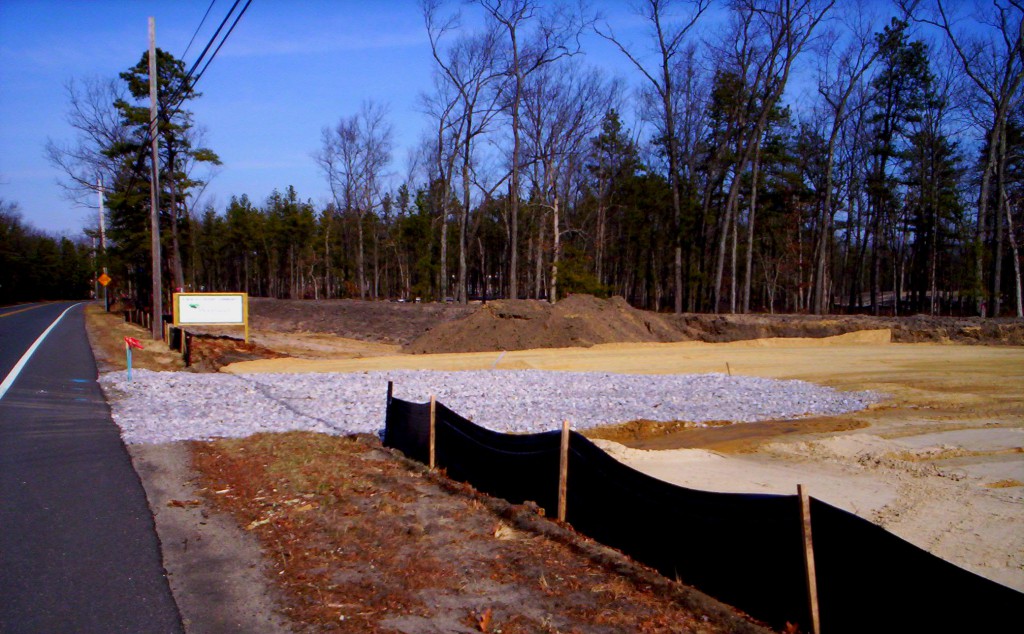
Standard for Stabilized Construction Access (Stone Pad)
Definition: A stabilized pad of clean crushed stone located at points where traffic will be accessing a construction site. The purpose of a stabilized construction access is to reduce the tracking or flowing of sediment onto paved roadways (or other impervious surfaces).
Maintenance:
- This entrance shall be maintained in a condition which will prevent tracking or flowing of sediment onto roadways. This may require periodic top dressing with additional stone and additional length as conditions demand and repair and/or cleanout of any measures used to trap sediment. All sediment spilled, dropped, washed, or tracked onto roadways (public or private) or any impervious surfaces must be removed immediately.
- Where accumulation of dust/sediment is inadequately cleaned or removed by conventional methods, a power broom or street sweeper will be required to clean paved or impervious surfaces. All other access pointes which are not stabilized shall be blocked off.
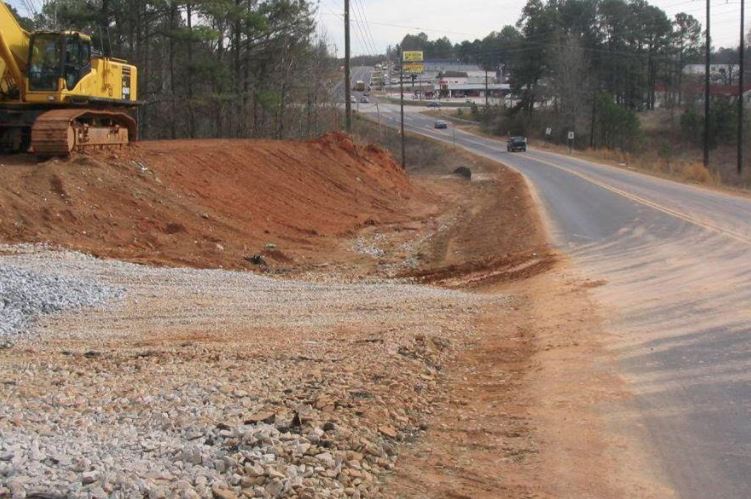
Standard for Storm Sewer Inlet Protection
Definition: A temporary barrier and settling facility installed at a storm sewer inlet. The purpose of the storm sewer inlet protection is to intercept and retain sediment, thus preventing the entrance of sediment into the storm sewer system.
- Maintenance, repair, and replacement shall be made promptly, as needed. The barrier shall be removed when the area draining towards the inlet has been stabilized. Inlet protection should not completely close off the inlet.
Wrapping the inlet in filter fabric is an example of improper inlet protection. The fabric often closes off the inlet and cannot easily be removed and cleaned for maintenance. These often tear and sediment falls directly into the inlet.
Standard for Permanent Vegetative Cover for Soil Stabilization:
- Permanent vegetation is to be seeded or sodded on all exposed areas within ten (10)days after final grading. At the time of the final inspection, you are required to provide confirmation that the proper type and amount of seed, lime and fertilizer have been used for permanent stabilization work. Straw mulch is required on all seeding.
- Establishing permanent vegetation means 80% vegetative cover (of seeded species) and mowed once
- Permanent stabilization attempts often fail due to poor seed bed preparation, a minimum of 5 inches of top soil is required, lime and fertilizer shall be worked into the top soil.
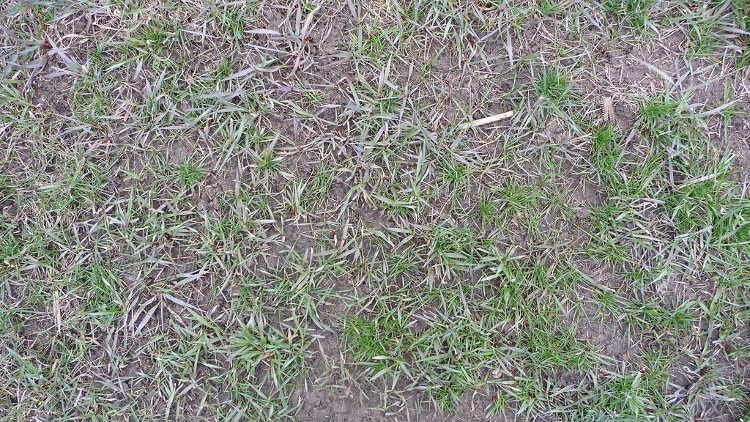
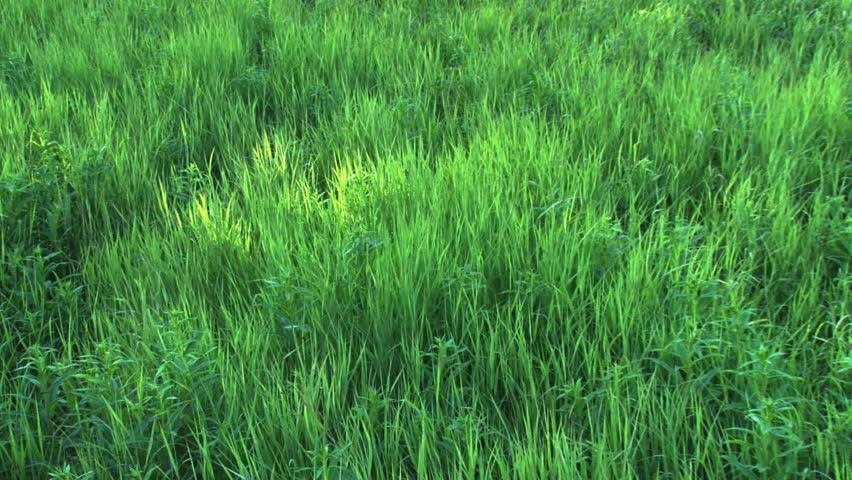
Shoreline Restoration
Organizing a shoreline restoration project is a great way to rebuild an erosion damaged shoreline and enhance the natural stability of an area along the water. Recycled materials such as tires, rocks and wood create a strong barrier for a shoreline that could normally suffer the impacts of erosion due to wave and wind damage.
This photo is a successful shoreline erosion project in Island Heights, New Jersey. This was put in place through a partnership of organizations including the Ocean County Soil Conservation District. This project proved so successful that it even stood up to the strong impacts of Superstorm Sandy in 2012.
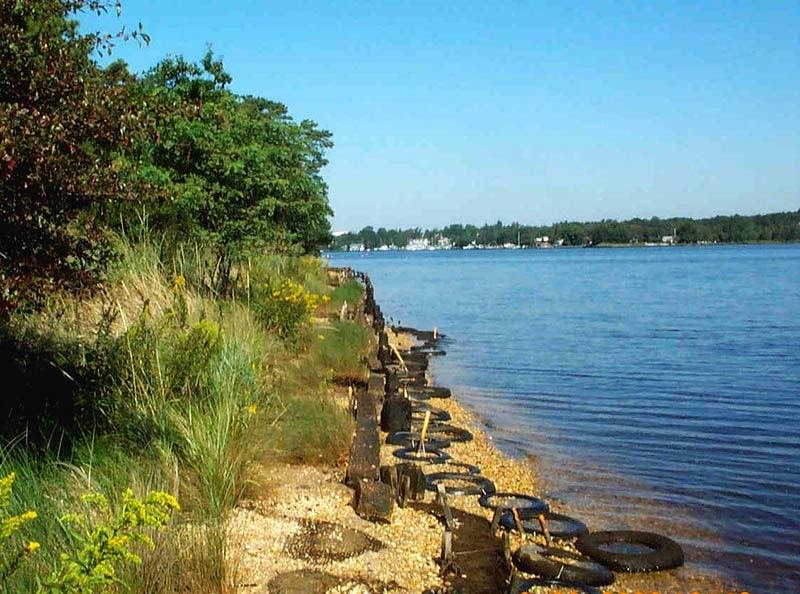
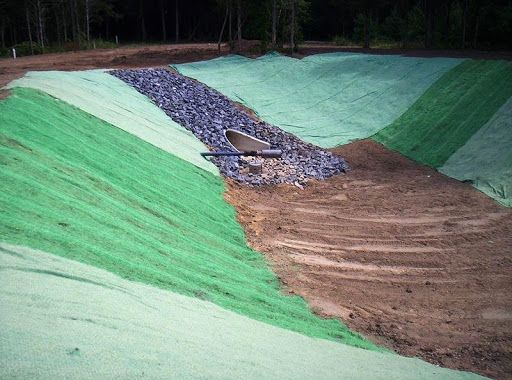
Erosion control matting and blankets
Another effective technique used for soil erosion control is erosion control matting. Erosion control matting, as seen in this image, is laid on top of loose soil and is secured into place. The matting remains in this location until native vegetation can begin to grow through, and does no harm to the environment. Erosion control mats provide the strength and surface area needed to protect an area from erosion or runoff.
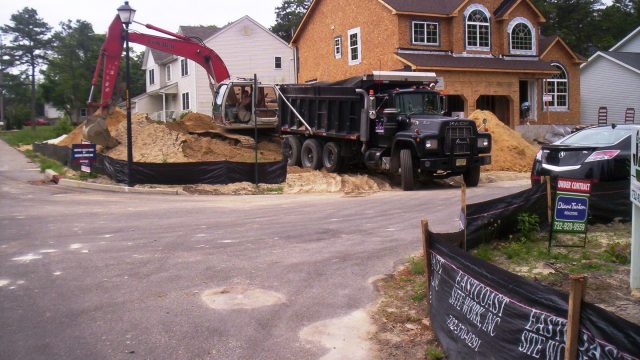
More information about NJ Soil Standards & Compliance
In accordance with P.L. 2010, Chapter 113, the State Soil Conservation Committee has revised its Standards for Soil Erosion and Sediment Control in New Jersey.
Standards now include provisions for mitigating the negative impacts of soil compaction on construction sites subject to review and regulation by the New Jersey Soil Erosion and Sediment Control Act, N.J.S.A. 4:24-39, et seq.
These provisions have been included within Sections 8 (Topsoiling) and 19 (Land Grading) of the Standards. (http://www.nj.gov/agriculture/divisions/anr/nrc/njerosion.html)
Effective December 7th, 2017, any application submitted to a local Soil Conservation District for erosion and sediment control plan certification must include provisions to mitigate potential soil compaction in accordance with the revised Standards. Previously certified Soil Erosion and Sediment Control Plans, plans eligible for re-certification and minor revisions are not subject to the adopted amendments. There are 11 identified exceptions outlined on page 19-2 of the Land Grading Standard.
Click here for the State of New Jersey, Department of Agriculture, NJ Soil Erosion and Sediment Control Program website:(http://www.nj.gov/agriculture/divisions/anr/nrc/njerosion.html)
The following are useful documents associated with the new Soil Restoration Standards.

Recent Posts About Soil Erosion and Sediment Control
-
Dust Control – the control of dust on construction sites and roads
Without proper precautions, active construction sites may be vulnerable to releasing dust. The New Jersey Soil Erosion and Sediment Control Standard for Dust Control addresses this concern.
-
Soil Stabilization – Key Conservation Practice
Soil stabilization is a key conservation practice. Learn more about the Standards for Temporary Stabilization.
-
Straw Mulch – Leaf Litter for a Construction Site
Leaf litter forms a blanket on the ground, protecting the soil and plant roots from weather and erosion. Straw mulch mimics leaf litter, offering similar protections. Learn more about the Standard for Stabilization with Mulch Only.
-
Protect Mature Trees on Project Sites
Many developers choose to protect mature trees on project sites for a variety of reasons. Learn more about the benefits of trees and how to ensure the protection of mature trees on a construction site.
-
Tracking Nonpoint Source Pollution
OCSCD helps to combat sediment pollution in our waterways through enforcement of the Standard for Stabilized Construction Access.
-
Seeding Season is Here
One of the key elements ensuring adequate grass germination and plant health is good topsoil depth and coverage. Learn more about the Standard for Topsoiling.


